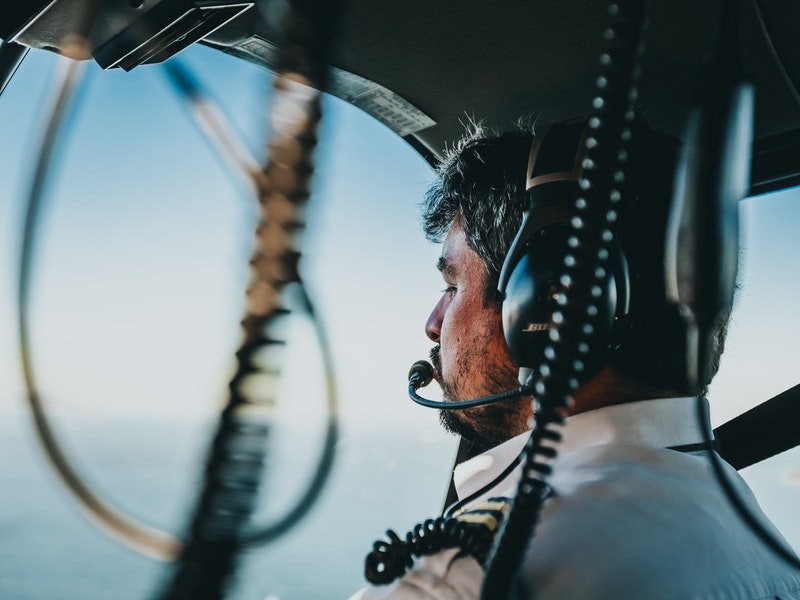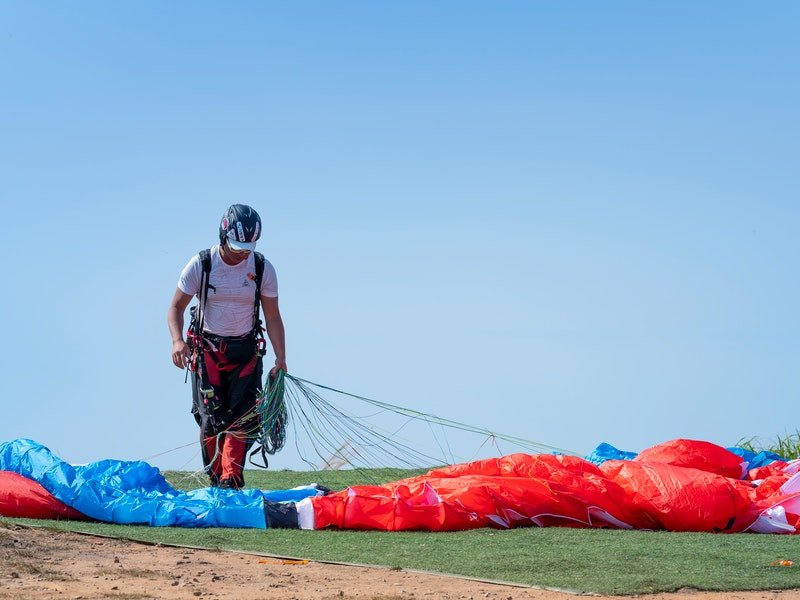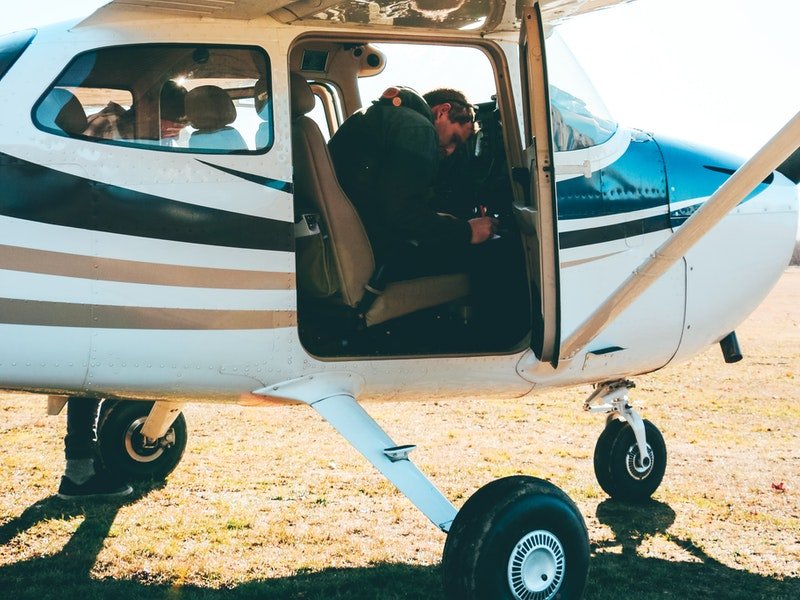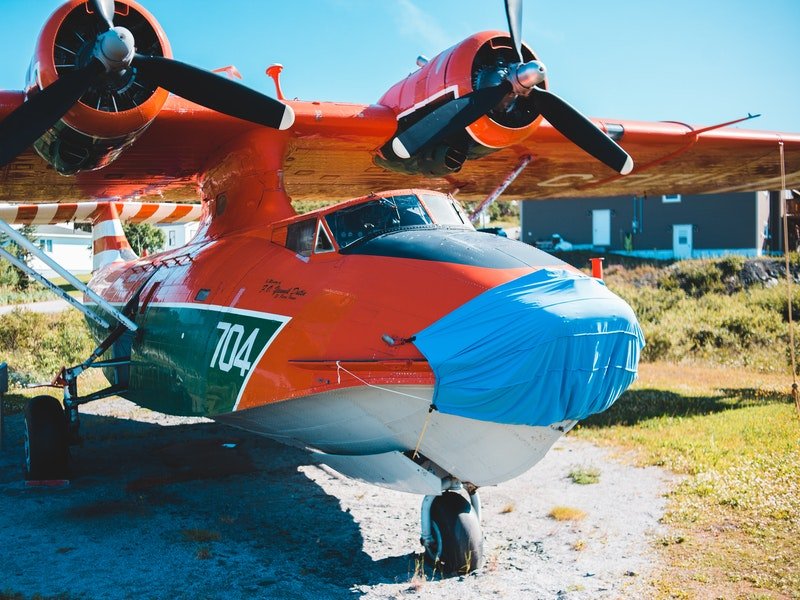You may have been on a skydive and noticed that the jump pilot was wearing a parachute. You were probably thinking: ‘do all skydive pilots wear parachutes? And if so, why?
I mean, it seems odd, right? It makes sense to have a safety parachute stored for the pilot, but why is he wearing one. Are the chances of the plane crashing that high? Or is he planning to make a jump?
Let’s learn more about skydive pilots. We can look at when and why they wear parachutes and whether they know how to skydive. We can also look at how to become and skydive pilot and what planes they fly.
What do skydive pilots do?

Often called a Jump Pilot, a skydive pilot is the one who flies the plane filled with skydivers. The skydive pilot’s job is basically to get you safely to the correct height and position where everyone can jump. It’s a strange pilot job, as you fill your plane up at the drop zone, ascend to 10,000 to 15,000 feet, then dump all your passengers in mid-air. On a typical day, a skydive pilot can do 4-10+ flights.
It’s probably not the job most wannabe pilots have at the top of their career options. A lot of aviators take up the position of skydive pilot to gain experience as a commercial pilot. However, you get some pilots passionate about skydiving and love being a vital part of the scene.
It’s a very challenging job. Skydive pilots must have a good understanding of wind and weather. They need to help decide when and where to jump and perform 100s, if not 1000s, of take-offs and landings each year.
Why do skydive pilots wear parachutes?

Most skydive pilots will need to wear a parachute. While it’s not always the law, the FAA requires pilots to have a parachute on when the flight door is open. The exception to this is when the plane has a bulkhead between the pilot and passenger. Most skydiving planes are small and without a bulkhead, so that’s why you’ll often see the pilot wearing his parachute backpack while flying.
The reason for this is purely safety and precaution. Skydiving planes must go through the same checks and pass the same safety tests as other small planes carrying commercial passengers. However, unlike standard small commercial flights, a skydiving flight has the extra dangers of the door being open and people jumping out of it. While it’s very uncommon, there have been cases of skydivers accidentally deploying their parachutes early and colliding with the jump plane.
So don’t be alarmed if you see a pilot wear a parachute; it’s purely precautionary.
If skydive pilots wear parachutes, do they know how to skydive?
To become a skydive pilot, you will need a commercial flight license, but you won’t need to know how to skydive. Having experienced and knowledge of skydiving will be an obvious advantage if you want to become a skydive pilot, but you won’t be required to skydive.
Commercial pilots get taught the basics of how to jump and operate a parachute but don’t have to learn to skydive or put the theory into practice. More importantly, a commercial pilot is given UPRT (Upset Prevention and Recovery Training) and must show a high level of proficiency in this to get their certification. So while most skydive pilots have never skydived, they will understand aerodynamics better than the average person.
So even though you’ll see a skydive pilot wear a parachute, most of them will never have used it before!
How do you become a skydive pilot?

To become a skydive pilot, you’ll have to get your license. First, you’ll need a private pilot’s license. A course to get your private pilot’s license will take around 60 hours, including 45+ hours of supervised flying. A private pilot’s license will cost about $8,000.
You’ll then need to get a commercial pilot’s license, which is a much more significant commitment. As well as undergoing 30 hours of specified training, you’ll also need to log a lot of flying hours. You’ll need 250 hours of flying time and 100 hours of pilot-in-command time. You’re also required to have 50 hours of cross-country flying. A commercial pilot’s license will cost you around $18,000.
There is also the addition of an instrument rating certificate. This certificate isn’t necessary to gain employment as a jump pilot, but it is highly beneficial, and some skydiving schools will prefer it. This additional course is quite expensive and will usually cost $5,000 to $6,000.
How much money do skydive pilots make?
This question isn’t simple to answer, as it can vary. A lot depends on the skydiving school and the amount of work. While some schools and drop zones will hire full-time pilots, many places will only have seasonal or sporadic work.
While at the top end, a popular skydiving spot may see full-time jump pilots make $30,000+ per year, in other places, it can be as low as $10 an hour or $5 per load. There is no consistent wage or scale, but a skydive pilot isn’t going to make big money.
Most pilots turn to the job of skydive pilot as a hobby or to gain experience. While the pay isn’t fantastic, it is an opportunity for new commercial pilots to log hours. Getting free use of a plane is valuable in itself, and the number of take-offs, landings, and hours carrying commercial passengers, is often worth more than they pay.
What planes do skydive pilots fly?

Each drop zone will usually have its own plane. The size and type of the plane can vary depending on the number of skydives and the typical altitude of that school or drop zone. A small school that takes 3-4 skydivers on 10,000 feet jumps will probably use a small plane, like a Cessna 182. A large school which deals with groups of 5-15 skydivers, with jumps as high as 13.000 feet and above, will have a much bigger plane, like a King Air or Cessna Caravan/.
Here are some of the planes you’ll see skydive pilots fly:
Cessna 182: The most common skydive plane (jump plane) in the USA. It’s small, simple, and cheap to run. But it’s also very safe and easy to maintain. It can carry small groups of 1-4 skydivers and reach 10,000 feet (within 10 minutes).
Cessna Caravan: The second most popular skydive pilot plane is also a Cessna. The Cessna Caravan is a much bigger craft. It can hold up to 21 skydivers. It can also reach higher altitudes than the 182 and takes around 15 minutes to reach 13,000 feet.
Twin Otter: The win otter is popular with big skydive schools that work all year round. It’s a large vehicle and can carry 22 skydivers and comes kitted out with benches. It’s popular due to the speeds it can reach and its reliability and durability.
King Air: The King Air is popular with professional skydivers. Able to reach 14,000 feet in just over 10 minutes, it’s popular with skydivers wanting to put in multiple jumps in a day. It can carry 15 skydivers, but its narrow door and low wing make it unsuitable for learners.
Skyvan: A jump school or dropzone will rarely have a Skyvan, but most skydivers love them. They are big and slow and can carry up to 23 skydivers per trip. The popularity of the Skyvan is its rear door. The tailgate door allows skydivers to take run-ups and do more fun and exciting exits from the plane. It’s often used in movies but sadly less present in day-to-day skydiving.

